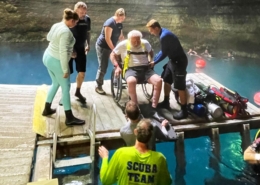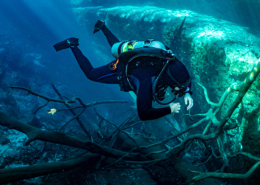By John Bentley
With all the redundancy and integrated safety features in dive equipment it is surprising to think that our second stage regulator delivers gas through a silicone mouthpiece that’s attached, in most cases, with a simple cable tie. The separation of this mouthpiece can be a scary and dangerous experience but is prevented and managed easily.
-
Prevention is Key.
Whether using a zip tie or a clasp system (as both can fail) a pre-dive check should involve checking the securement device as well as the mouthpiece itself. The mouthpiece should be secured to the 2nd stage body and be free of holes and tears.
-
Reaction
If the mouthpiece becomes separated, or a hole develops, water will enter the airway. Whenever water enters a diver’s airway the immediate action should be to switch to a different regulator. A diver should not continue to use a wet breathing regulator because of the later implications of a snowball effect incident. With sufficient air supply your own alternate, sometimes called octopus, is the first choice. While you can use a regulator without a mouthpiece it isn’t nearly as comfortable and the regulator recovery process is just as time consuming as deploying the alternate.
-
Follow-up
As with any gear failure, no matter the severity, the dive should immediately be aborted.















发表评论
想加入讨论吗?请发表您宝贵的意见!